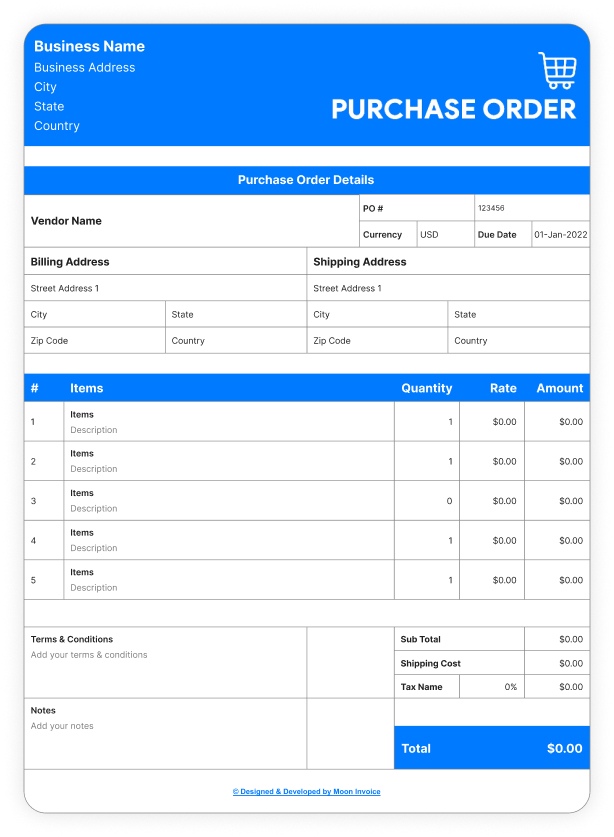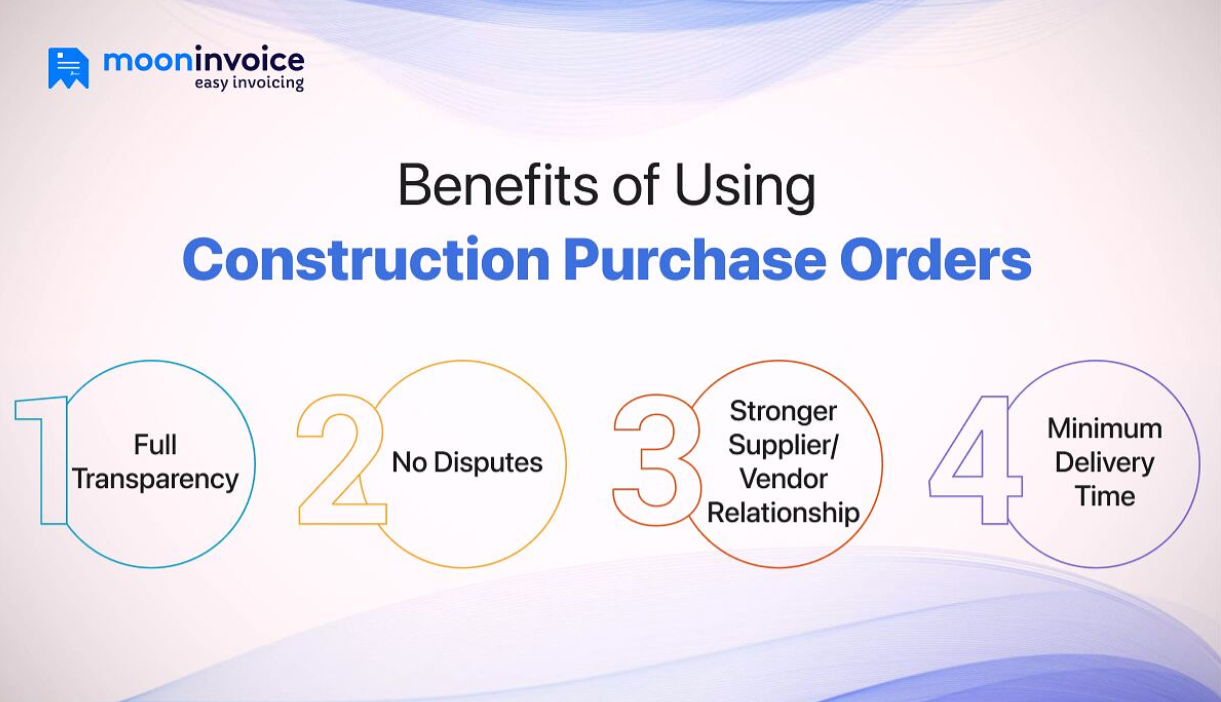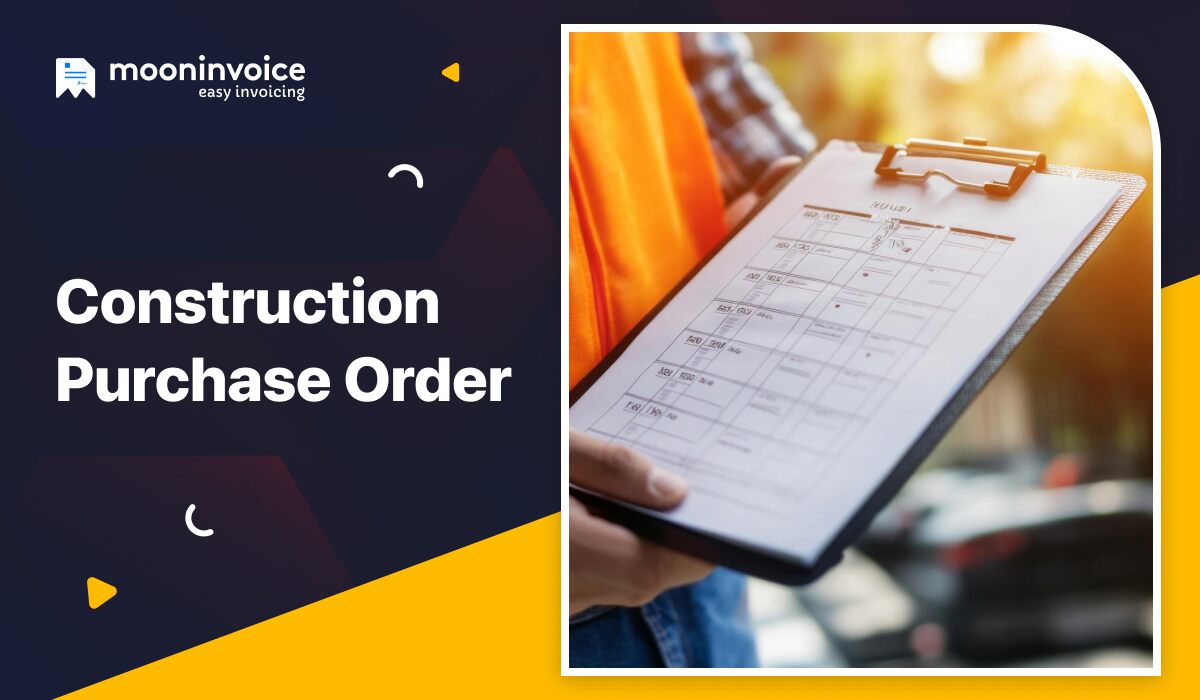“The bitterness of poor quality remains long after the sweetness of low price is forgotten.”
Once said by Benjamin Franklin, now explains why cost-cutting can lead to expensive mistakes, especially those associated with the construction industry. The industry which is likely to see expansion at an annual rate of 2% between 2026 and 2029.
In the ever-growing construction industry, imagine doing the groundwork with low-grade materials or hiring the lowest bidder. Well, you may save a lot of money, but you will soon face consequences more than you think.
The construction contractors are, therefore, considering construction POs (Purchase Orders) to keep everyone on the same page. Nowadays, it has become a part of a contractor’s checklist to bridge the gap between contractors and suppliers.
A purchase order, when made professionally, can formalize the purchase process and simultaneously promote a healthier relationship with suppliers.
Let’s delve deeper and find out what is a PO in construction industry.
📌 Key Takeaways
- A construction purchase order (POs) is a document shared with the supplier to obtain required goods.
- Item description, quantity, unit price, and payment terms are among the things to be included in a PO.
- Prioritizing paperless POs and investing in the right tools can help you improve the purchase order process.
- Moon Invoice is a go-to purchase order software for construction professionals to manage unlimited POs.
What is a Construction Purchase Order(PO)?
A construction PO or construction purchase order is a document to commence the procurement process of goods and materials required in completing the construction project.
Issued by a project manager or a contractor, a construction PO offers transparency by letting everyone know how many items are being purchased and in what quantities.
Notably, the construction purchase order works as a legally binding document following the supplier’s acknowledgment.
Construction purchase orders are later moved to the financial records so that the accounting team can verify the incoming invoices and proceed with the payment.
Bored of Making Construction POs on Paper?
Brush your worries aside and start generating paperless POs with Moon Invoice to boost your verification process.
What to Include in a Construction Purchase Order?
Below are some crucial elements to be included whenever you create a purchase order. Failing to add any of them may lead to miscommunications or payment delays, which can harm your relationship with suppliers or vendors.
1. Buyer & Vendor Information
Populate the basic details of your business, followed by vendor details such as full name, address, city, state, and more. Generate a high-quality purchase order using a ready-to-go purchase order template, so that everyone understands to whom the PO has been issued.
2. Item Descriptions
Elaborate on what type of materials you require to finish the ongoing project work. You can mention the item name and write a short description to help the vendor get an idea of what exactly you are looking for. Therefore, add item descriptions in construction POs.
3. Number of goods
Besides descriptions, select the quantity of goods as per your project requirements. You can discuss with the site engineers and then finalize the number of deliverables. It’s crucial to describe the goods quantity to avoid potential back-and-forth.
4. Unit Price
Unit pricing lies at the heart of the purchase order. Something which you should not forget to include in a purchase order. Basically, it is the cost per unit of the selected item. So, you must include the unit price right after completing negotiations with the vendors.
5. Delivery location
Specify the date and location of the goods delivery in the construction PO. It will help vendors know where you want the goods to be delivered. Accordingly, vendors can ship the goods to the shared construction location or FOB Destination in a timely manner.
6. Payment terms
Lastly, encompass the payment terms to let vendors know how you are willing to pay the money. Including payment terms in the construction PO, you can tell vendors what are your payment intentions. You can specify whether you want to pay online or by cash.
Sample Purchase Order for Construction Company Example
Here is the perfect construction purchase order example to understand how the purchase order construction looks.

How to Improve Your Construction Purchase Order Process
In case you find generating a construction purchase order tricky and are looking for ways to improve the process, here’s how.
1. Prioritize Paperless POs
Creating purchase orders in hard copies will not only delay the delivery of goods but may also land you in disputes, as they are prone to errors. Instead, utilize paperless purchase orders that clearly define your requirements and leave no room for communication gaps.
2. Automate Workflows
Consider optimizing your approval workflow so that you can send construction POs quickly and expect faster delivery of goods. Train your team to prepare accurate purchase orders and seek quick approval without any further delays.
3. Audit Purchase Orders
Conduct the purchase order audits to nab the costly mistakes, such as pricing errors or incorrect quantities. Such auditing practices can lead to improved efficiency and keep repetitive errors at bay. Plus, save time on acquiring the goods from the vendors.
4. Invest in the Right Tools
Adopt the purchase order software that really pays off. A purchase order system centralizes purchase orders, quotes, or estimates in one place. This means you don’t need to carry hard copies or waste time arranging physical meetings to hand over POs.
Benefits of Using Construction Purchase Orders

Using paperless construction purchase orders has really amazing perks that are highly sought-after by construction professionals. Let’s see.
1. Full Transparency
Generating purchase orders when ordering goods from vendors keeps everyone well-informed. Suppliers learn about the formal request made by the buyer and dispatch the ordered goods. Thus, as a buyer, you can expect timely delivery of goods.
2. No Disputes
A purchase order, made using a free purchase order template, leaves no chance for a verbal spat. It clearly specifies what are your demands and how the supplier will receive the payment. Hence, there would be no unwanted surprises.
3. Stronger Supplier/Vendor Relationship
Upon the goods delivery, the supplier or vendor can share an invoice, so that the buyer can verify it against the purchase order. Once matched with a purchase order, they can initiate the payment, which is associated with the project cost. This way, both parties happily work together and strengthen their relationships.
4. Minimum Delivery Time
Since a purchase order bridges the communication gaps between both the buyer and the supplier, the delivery time is usually less than what is required. This is because the supplier quickly learns about what needs to be delivered and proceeds with delivery at the buyer’s location.
💡Need To Know:
Create and Manage Purchase Orders with Moon Invoice
With Moon Invoice, creating and managing construction purchase orders is not only easy, but it also promotes healthier supplier relationships. An advanced purchase order generator boasts cutting-edge features to create a nice-looking purchase order in a way that the recipient easily understands what you are looking for.
Once you are done making new purchase orders, you can send them digitally without arranging formal meetings. That’s right, when you have advanced purchase order software, you can either send a purchase order via WhatsApp or via Email.
Here’s why Moon Invoice is the best bet for creating purchase orders professionally.
-
- Customizable purchase order templates
- AI-enabled invoice generator
- Dedicated vendor portal
- Smart expense tracker
- Barcode generator
- Credit notes
- Time tracker
- Project management
- e-Way Bills
- Detailed reports
- Cloud storage
- And, customer support that never sleeps
Fed Up With Manual POs? Say No More!
Make error-free construction POs with the state-of-the-art purchase order software, Moon Invoice, without getting burned out.
Wrapping Up
In the construction project, sending a construction purchase order gives clarity to the supplier. Concurrently, keeps everyone posted in the buyer’s team. However, once you start accepting large-scale projects, managing purchase orders in bulk becomes tricky unless you have integrated construction management tools.
One such sophisticated software is Moon Invoice, helping contractors like you to automate the purchase order process and develop lasting supplier relationships.
You get readymade purchase order templates to create professional and high-quality construction POs on the go. In addition to that, you get cloud storage to manage unlimited construction POs securely.
Look what else Moon Invoice has to offer. Grab a 7-day free trial now.



















